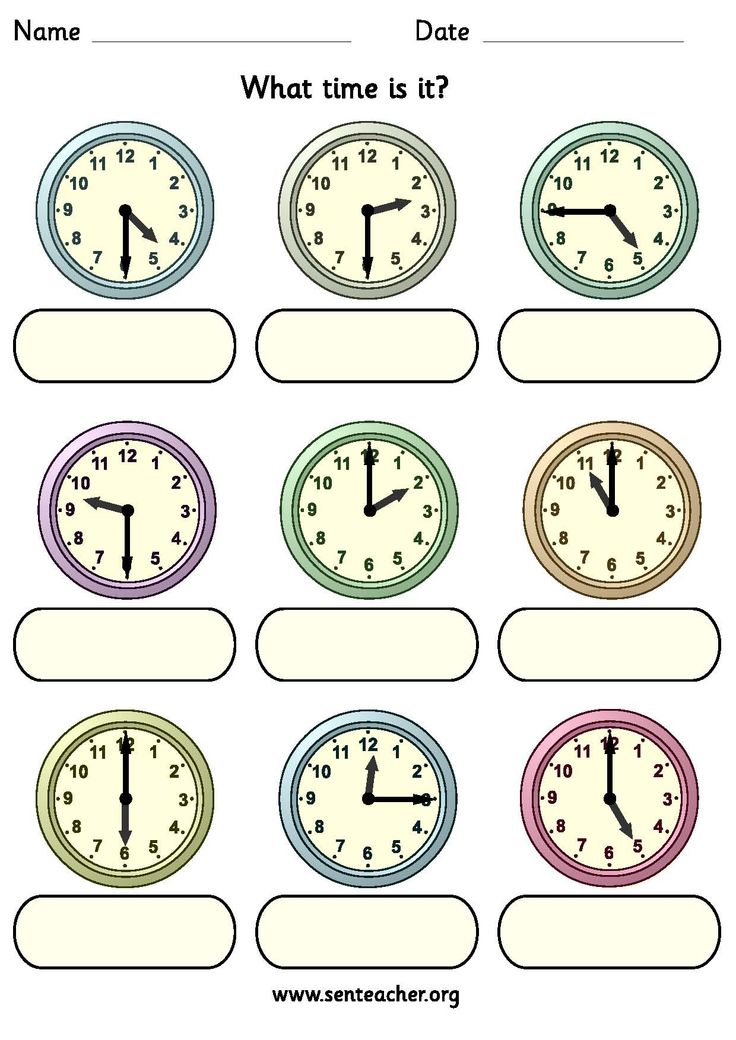Telling the time
Asking the
time
- What's the time?
- What time is it?
- Can/Could you tell me the time, please?
Question:
|
What's the time, please?
|
Answer:
|
It's three o'clock.
|
It's...
one o'clock = 1:00
two o'clock = 2:00
three o'clock = 3:00
four o'clock = 4:00
five o'clock = 5:00
six o'clock = 6:00
seven o'clock = 7:00
eight o'clock = 8:00
nine o'clock = 9:00
ten o'clock = 12:00
eleven o'clock = 12:00
twelve o'clock = 12:00
two o'clock = 2:00
three o'clock = 3:00
four o'clock = 4:00
five o'clock = 5:00
six o'clock = 6:00
seven o'clock = 7:00
eight o'clock = 8:00
nine o'clock = 9:00
ten o'clock = 12:00
eleven o'clock = 12:00
twelve o'clock = 12:00
There are two common ways of telling the time.
1) Say the hour first and then the minutes. (Hour + Minutes)
- 6:25 - It's six twenty-five
- 8:05 - It's eight O-five (the O is said like the letter O)
- 9:11 - It's nine eleven
- 2:34 - It's two thirty-four
2) Say the minutes first and then the hour. (Minutes + PAST / TO + Hour)
For minutes 1-30 we use PAST after the minutes.
For minutes 31-59 we use TO after the minutes.
- 2:35 - It's twenty-five to three
- 11:20 - It's twenty past eleven
- 4:18 - It's eighteen past four
- 8:51 - It's nine to nine
- 2:59 - It's one to three
When it is 15 minutes past the hour we normally say: (a) quarter past
- 7:15 - It's (a) quarter past seven
When it is 15 minutes before the hour we normally say: a quarter to
- 12:45 - It's (a) quarter to one
When it is 30 minutes past the hour we normally say: half past
- 3:30 - It's half past three (but we can also say three-thirty)
O'clock
We use o'clock when there are NO minutes.
- 10:00 - It's ten o'clock
- 5:00 - It's five o'clock
- 1:00 - It's one o'clock
Sometimes it is written as 9 o'clock (the number + o'clock)
12:00
For 12:00 there are four expressions in English.
- twelve o'clock
- midday = noon
- midnight
Telling the time video
Asking for the Time
The common question forms we use to ask for the time right now are:
- What time is it?
- What is the time?
A more polite way to ask for the time, especially from a stranger is:
- Could you tell me the time please?
The common question forms we use to ask at what time a specific event will happen are:
What time...?
When...?
- What time does the flight to New York leave?
- When does the bus arrive from London?
- When does the concert begin?
Giving the Time
We use It is or It's to respond to the questions that ask for the time right now.
- It is half past five (5:30).
- It's ten to twelve (11:50)
We use the structure AT + time when giving the time of a specific event.
- The bus arrives at midday (12:00).
- The flight leaves at a quarter to two (1:45).
- The concert begins at ten o'clock. (10:00)
We can also use subject pronouns in these responses.
- It arrives at midday (12:00).
- It leaves at a quarter to two (1:45).
- It begins at ten o'clock. (10:00)
AM vs. PM
We don't normally use the 24-hour clock in English.
We use a.m. (am) for the morning and p.m. (pm) for the afternoon and night.
3am = Three o'clock in the morning.
3pm = Three o'clock in the afternoon.
ข้อมูลจาก... http://www.vocabulary.cl/Basic/Telling_Time.htm





















